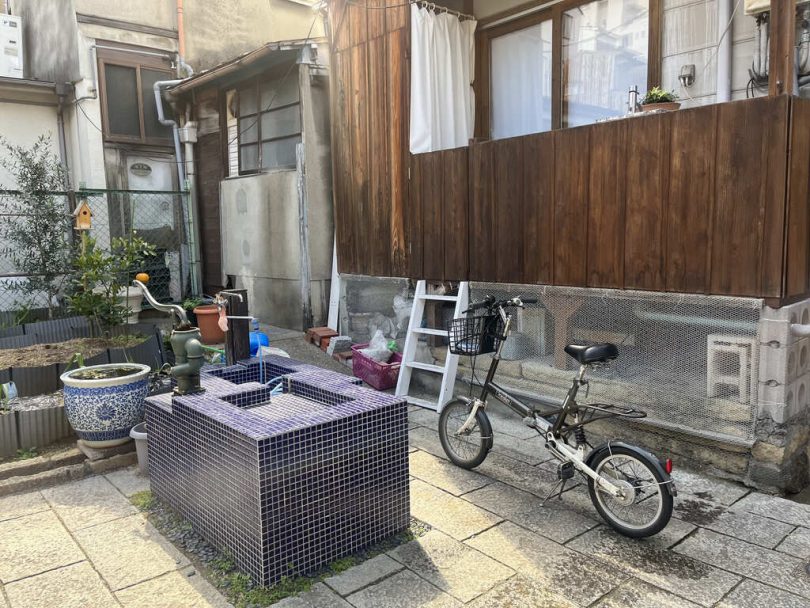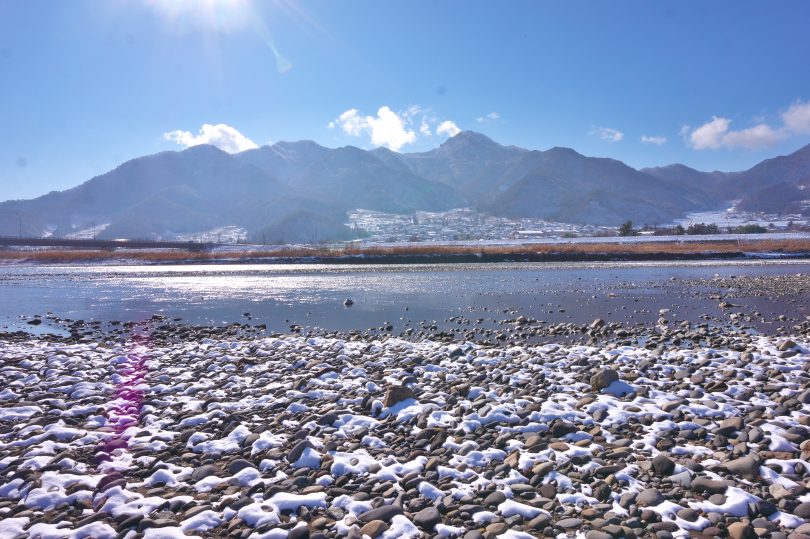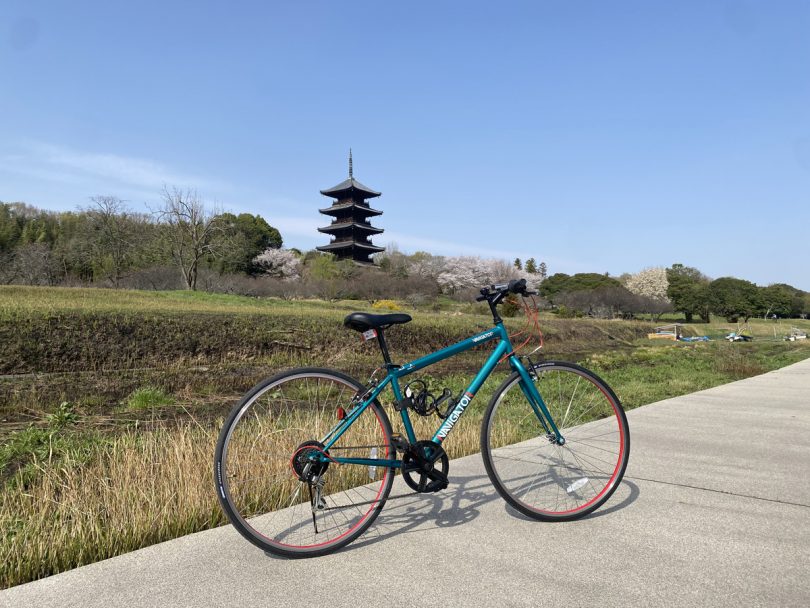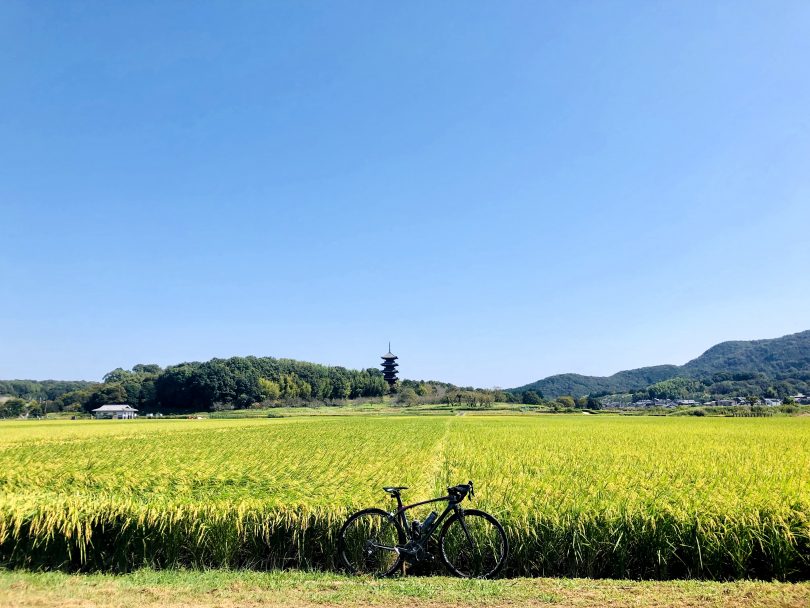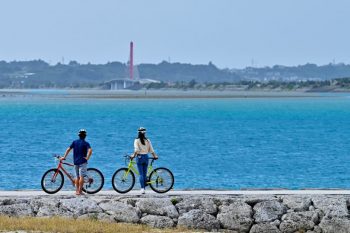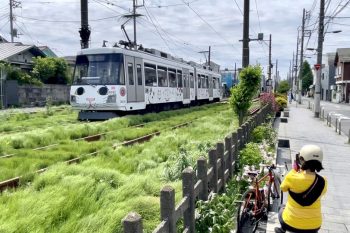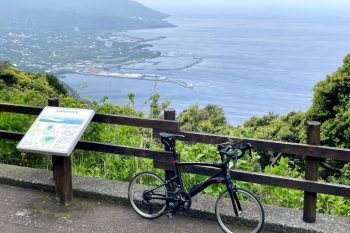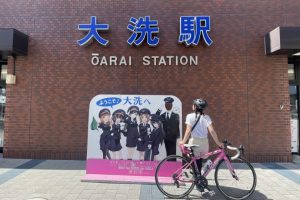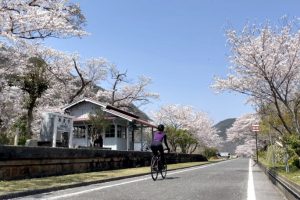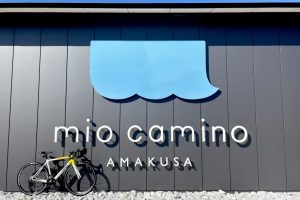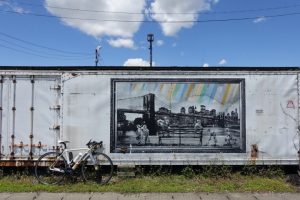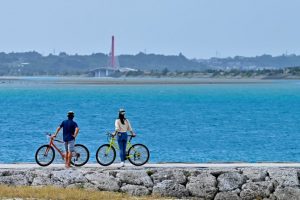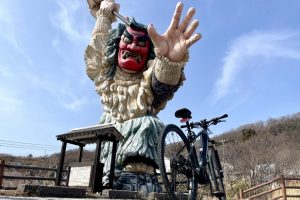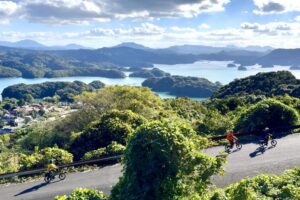Shimonita leeks grown in Shimonita Town, Gunma Prefecture, have thick, short-looking white roots, and are characterized by their sweetness when grilled. For this reason, they are popular as an ingredient in “sukiyaki,” and in winter, some restaurants in Shimonita town offer sukiyaki, and many people come all the way to the town to try it.
Here is a cycling guide to eating sukiyaki with such Shimonita leeks.
Contents
- Starting from Yamana Station
- Ueno San Monument, registered as UNESCO Memory of the World
- Enjoy factory-direct Japanese sweets
- Streets of Obata, a castle town
- Nanjai Station with an unusual station name
- Finally, we are in Shimonita Town
- Sukiyaki with plenty of Shimonita leek
- Free Fare with the GOGO! Shimonita Campaign
- Extra dessert
- Course Introduction
- Summary
Starting from Yamana Station
Yamana Station on Jyoshin Dentetsu (electric railway) Jyoshin Line is a cute retro station building with green walls.
If you are hesitate to transfer at Takasaki Station on JR Takasaki Line, you can get off at Takasaki Station and ride to Yamana Station. It is not very far, but be careful as you are driving through the city center.
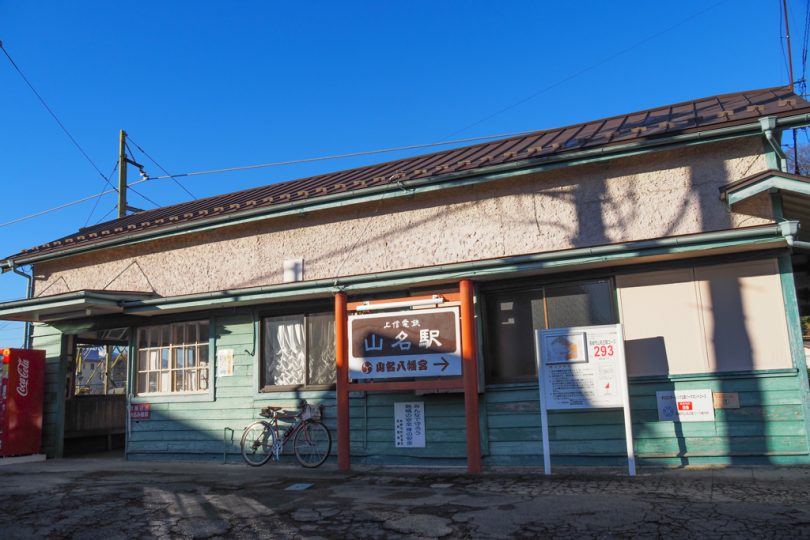
Pray at Yamana Hachimangu Shrine next to Yamana station
Yamana Hachimangu Shrine is located right next to Yamana Station, so visit there before departure.
You can cross the railroad crossing next to the station, but we recommend that you take the tunnel approach that passes under the railroad tracks as it is a style not often seen elsewhere.
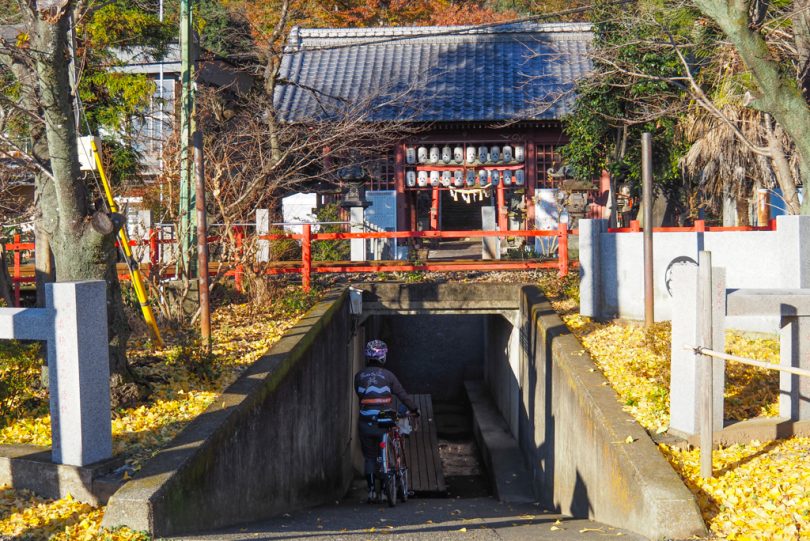
The shrine has a long history dating back to the Heian period (794-1185) and is believed to be a shrine for safe childbirth and child rearing.
The approach to the shrine is also characterized by the presence of a bakery and a café on the approach to the shrine so that visitors can enjoy visiting the shrine with their children.
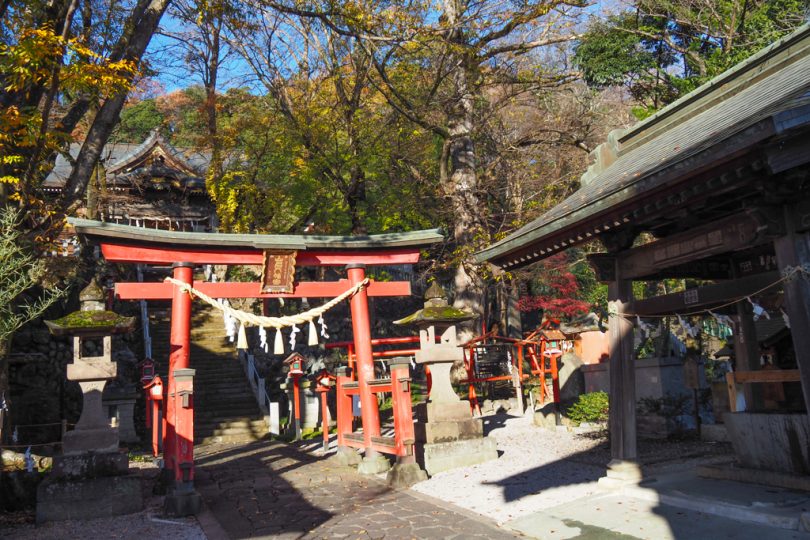
Passing through the torii gate, visitors enter the main shrine. The main shrine pavilion was built in the 18th century and is steeped in history.
Although the shrine has such a long history, it underwent a major renewal in 2016, and the main hall was repainted and the website, amulets, etc. were fashionably reborn.
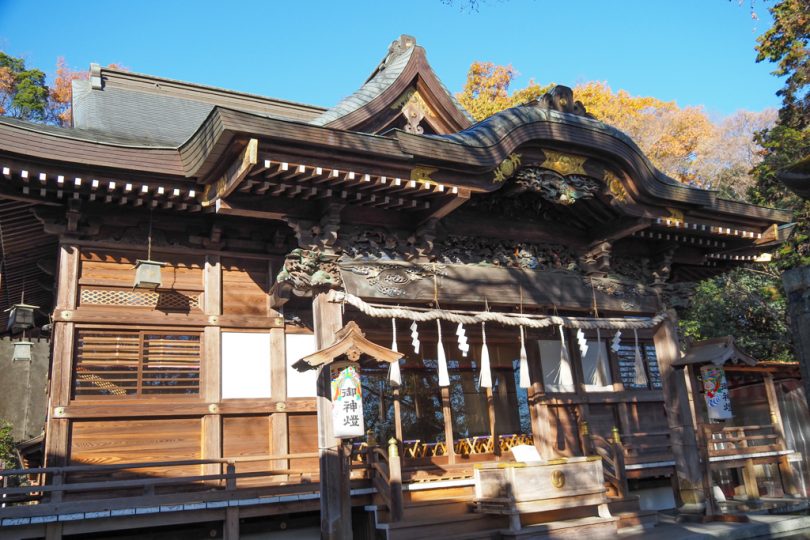
If you go around the back of the shrine after visiting the main hall, you will find Shishigashira-sama (the head of Singh/ lion) enshrined as the deity of the back of the shrine.
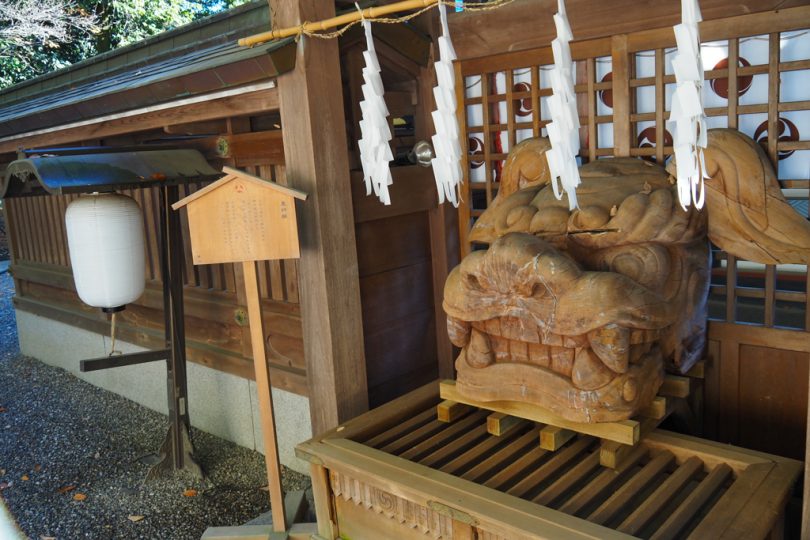
Drive-in Nanakoshi with retro vending machines
From Yamana Hachimangu Shrine, take Prefectural Route173 to Drive-in Nanakoshi.
Some of you may know this place as it was featured in the manga “Long Riders”.

There is a retro vending machine, and hot sandwiches and chashu noodles are popular. It would be interesting to have breakfast here before cycling.
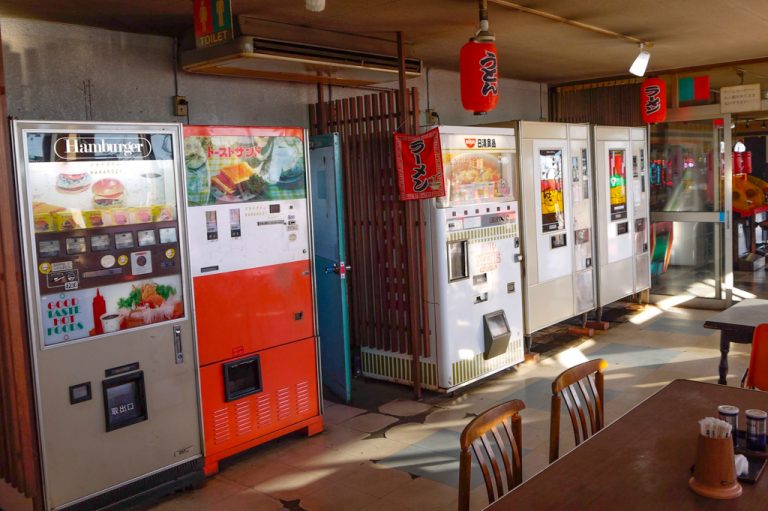
Next door is Nanakoshiyama burial mound. In spring, the cherry blossoms on the burial mound are beautiful.
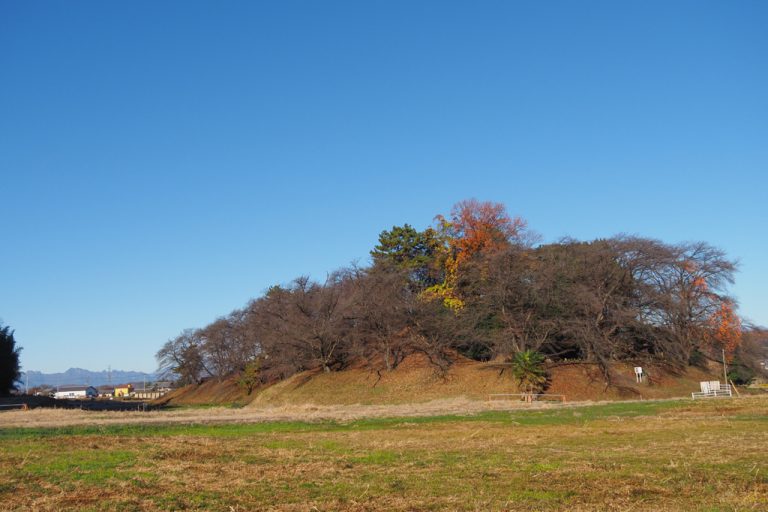
Ueno San Monument, registered as UNESCO Memory of the World
After merging onto Route254, turn right a short distance later and ride along the promenade along Yata river.

Passing under Jyoshin Dentestu, take a detour to see Tagohi Monument in Yoshii Athletic Park.
In one corner of the park, there is “oiya” (a coveredshed) , in which Tago monument is kept and displayed.
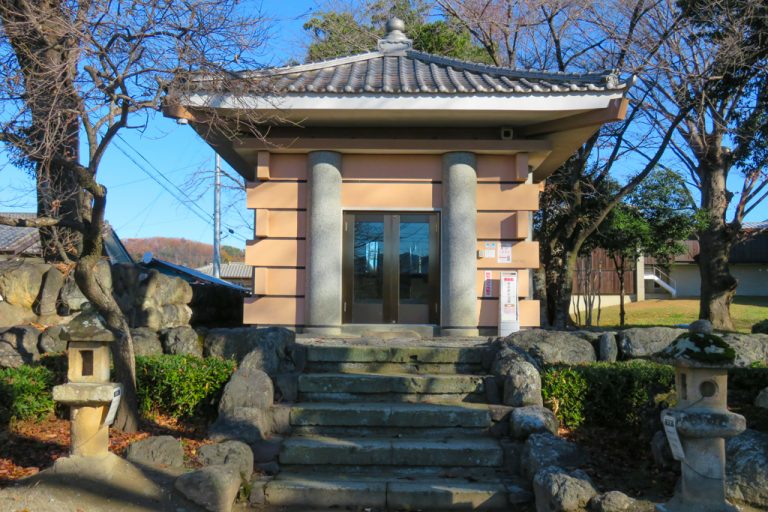
Tago monument is one of the “Three Monuments of Ueno (Kozuke Sanpi),” which was registered as a UNESCO “Memory of the World” in 2009. Together with Yamanoue monument and Kanaizawa monument, the three monuments are known as”Kouzuke Sanpi”.
They are considered to be the oldest group of stone monuments that indicate cultural exchange in East Asia during the 7th and 8th centuries.
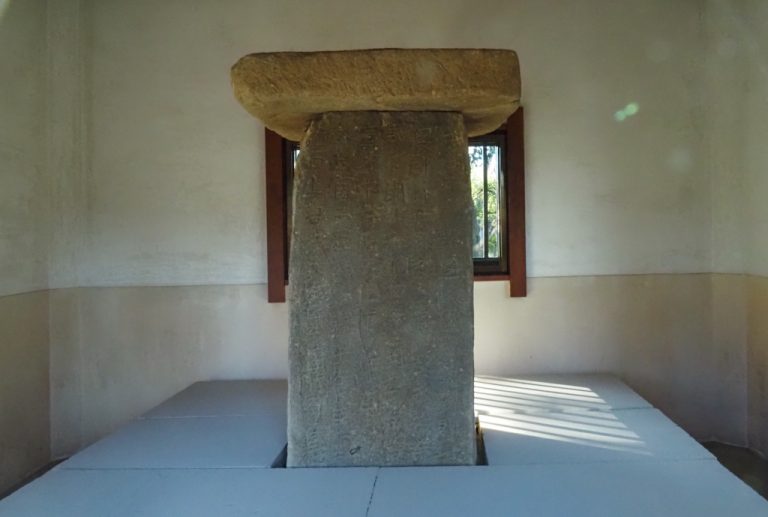
The other two are located in close proximity to each other, so it is fun to visit them as a set if you are interested.
Today, I will only see Tago Monument and continue on.
The cover of the Tago monument is also the design of a manhole in Yoshii Town, Takasaki City. Please pay attention to your footsteps when you are cycling.
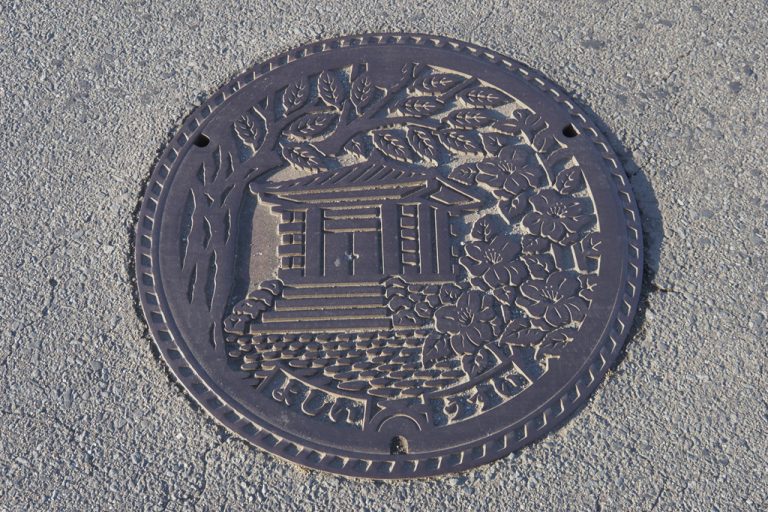
Enjoy factory-direct Japanese sweets
Cross Kabura river and take Prefectural Road200. It is a pleasant road with moderate ups and downs.
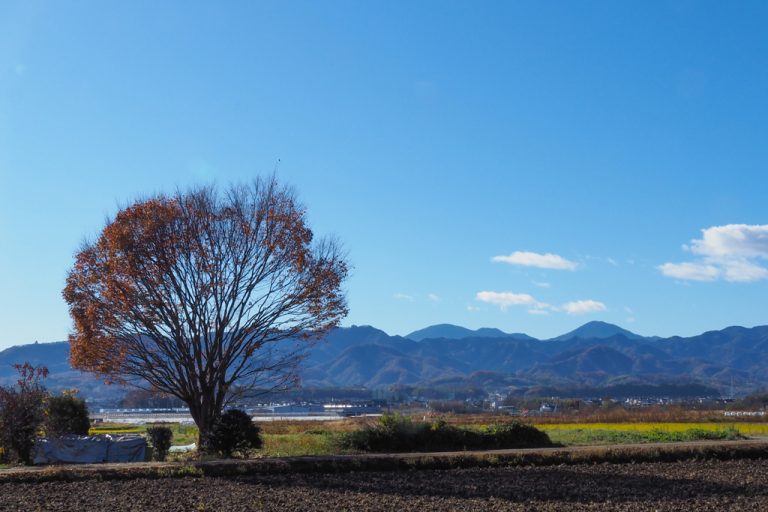
After cycling for a while, you will see Yoshii Country Club with its interesting rugged rocks. The golf course is said to be inspired by the landscape of Hawaiian Islands. I wonder if the rocks at the entrance are inspired by lava from Hawaii. I see what you mean, it looks like Hawaii!
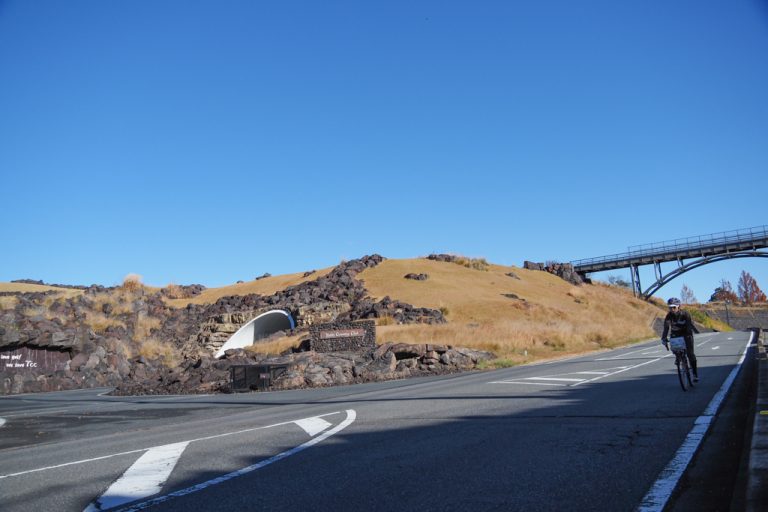
After reaching the peak of Yoshii Country Club, you will start to descend.
As you continue downhill, you will come to the direct sales store of Musashi Confectionery Yoshii Factory, so don’t overlook it.
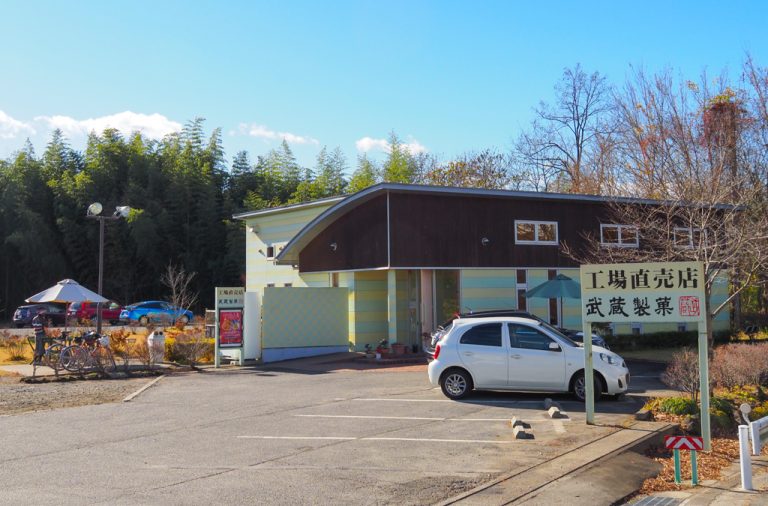
Even if you do not know the name Musashi Seika, you may have seen their wagashi (Japanese confectionery) before, as the company distributes wagashi to major supermarkets.
You will be excited to find Musashi Seika’s wagashi in the supermarkets you frequent.
Inside the store, you will find a wide variety of wagashi on display. Since they are cheaper than those at the supermarket, customers were constantly visiting the store, even on weekdays.
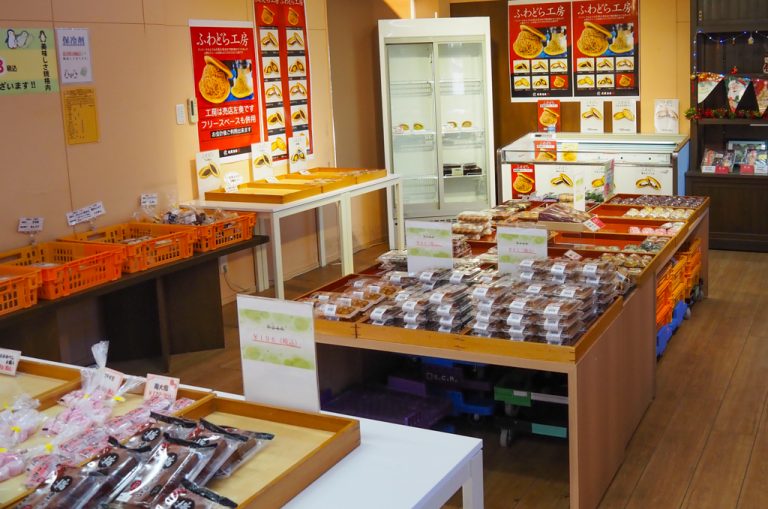
At the back of the store, there is a rest area where you can eat your purchases. It is nice that they also provide tea and water on a self-serve basis.
It is also interesting to note that there is a workshop next to the rest area where you can see the process of making wagashi.

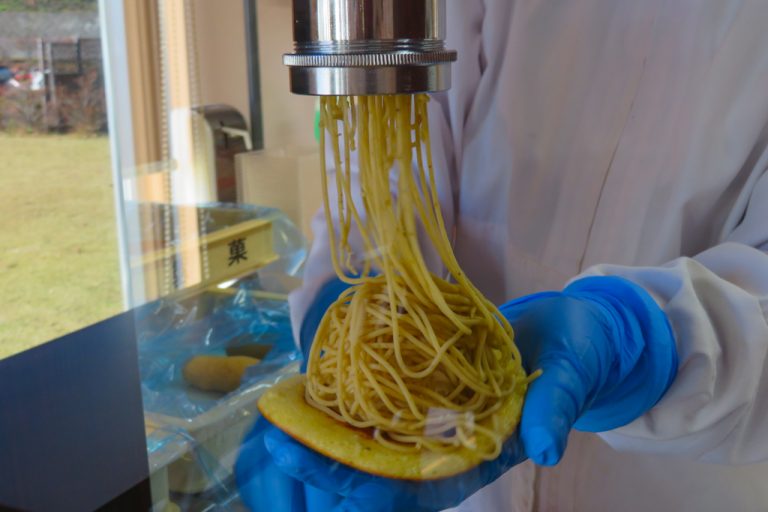
I had a mont blanc dorayaki, made with Japanese chestnuts from the workshop. It was not too sweet and had a rich chestnut flavor.
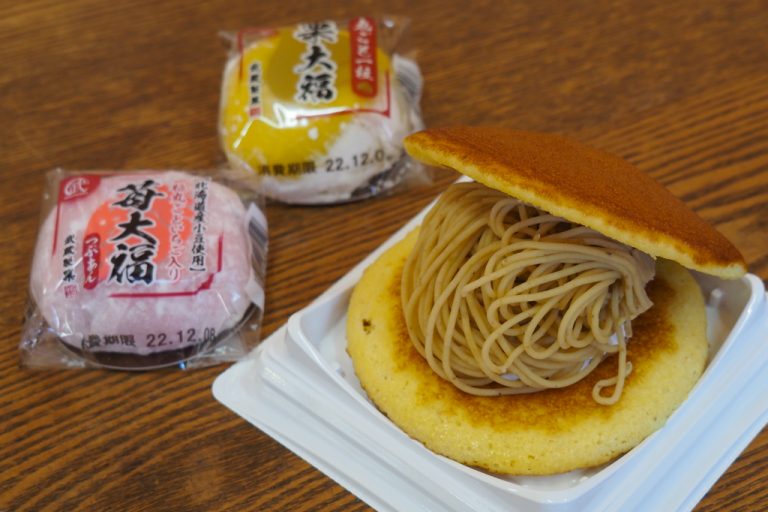
Streets of Obata, a castle town
After leaving Musashi Seika, cross Kabura River and pass by Jyoshu Fukushima Station. Follow the road and you will arrive at the castle town of Obata in Kanra Town. Oda and Matsudaira clans ruled this castle town, and you can still feel the prosperous atmosphere of those days.
Ogawa weir that flows along the road is a beautiful river that has been selected as one of the “100 Best Waters in Japan”.
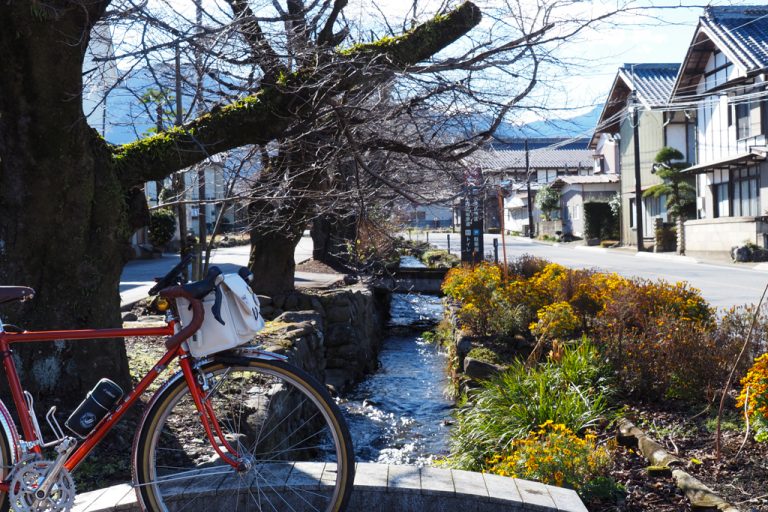

There is a café in an old building, and if we had time, we would like to have a cup of tea, but we are in a hurry, so just leave it for another time.
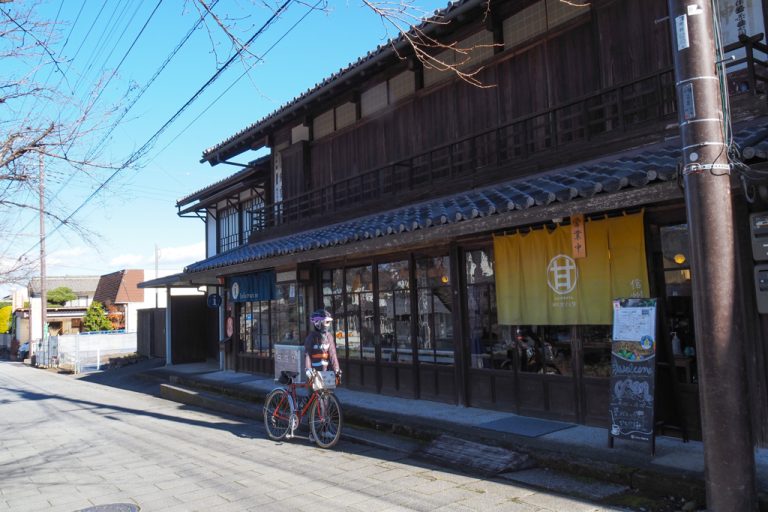
Komainu-sama with Aigo
We stop at Obata Hachiman Shrine, which was built during the reign of Nobumasa, the third generation of Obata Oda family.
The guardian dogs here are very popular among komainu (guardian dog) lovers because of their affection for the shrine.
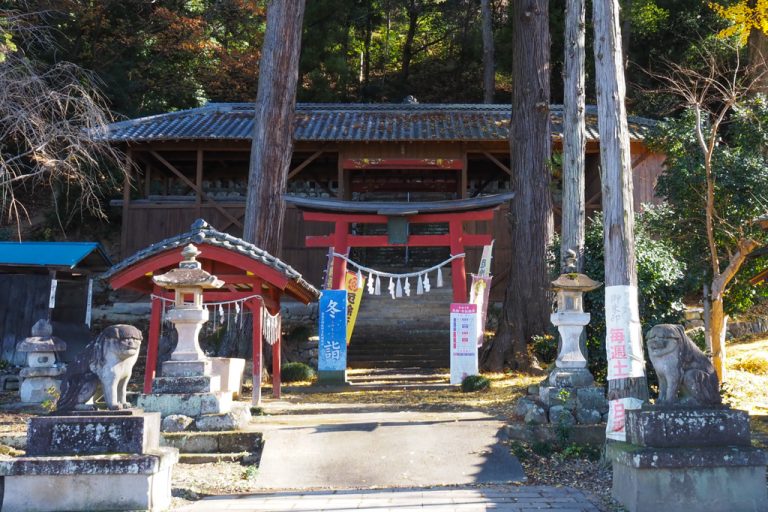
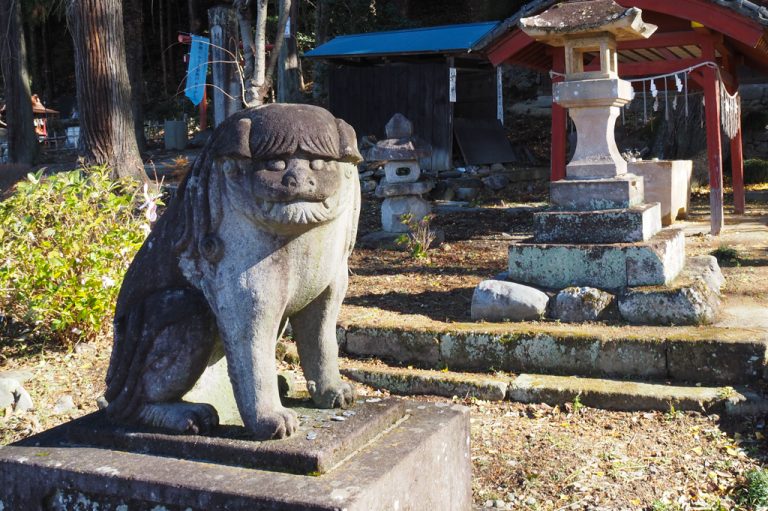
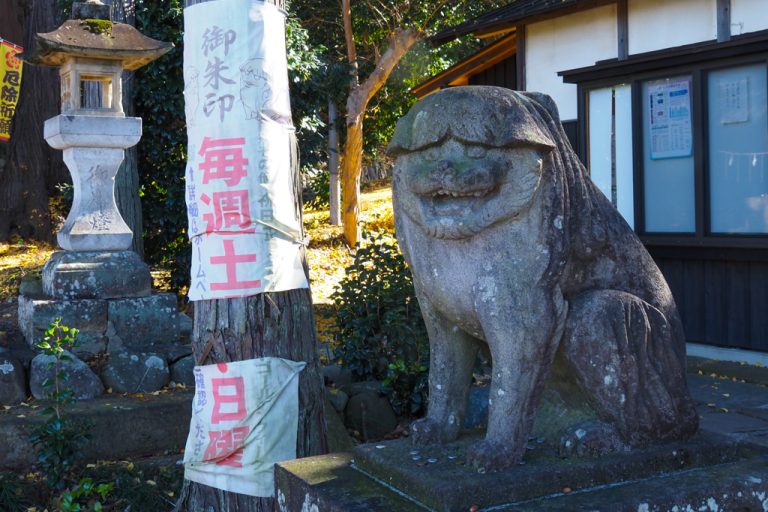
On Saturdays and Sundays, “goshuin” (red ink stamp of shrine) with cute designs of komainu are available.
Roadside Staion Kanra with excellent pizza
Pass by Roadside station Kanra near the castle town of Obata.
Pizza baked in an authentic stone oven is popular at the food court here. The pizzas made with local miso and vegetables are excellent.
Since we will be eating sukiyaki in Shimonita today, we will be patient and continue on.
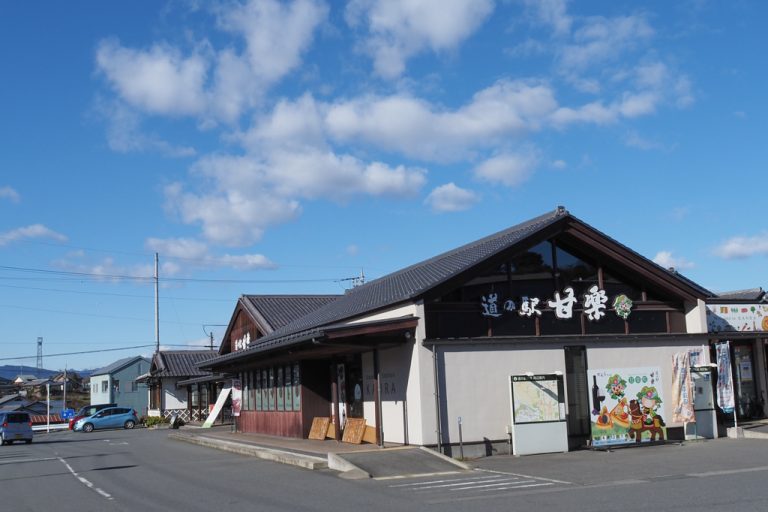
We will continue driving on Prefectural Route193 for a while. There are few cars and it is very comfortable.
Turn right at the Y-shaped intersection of Prefectural Routes192 and 193. You will pass under the Joshinetsu Expressway.
On the bridge crossing Kabura river, there is a magnificent Wago large ginkgo tree. It looks like a single tree, but it is a group of five trees.
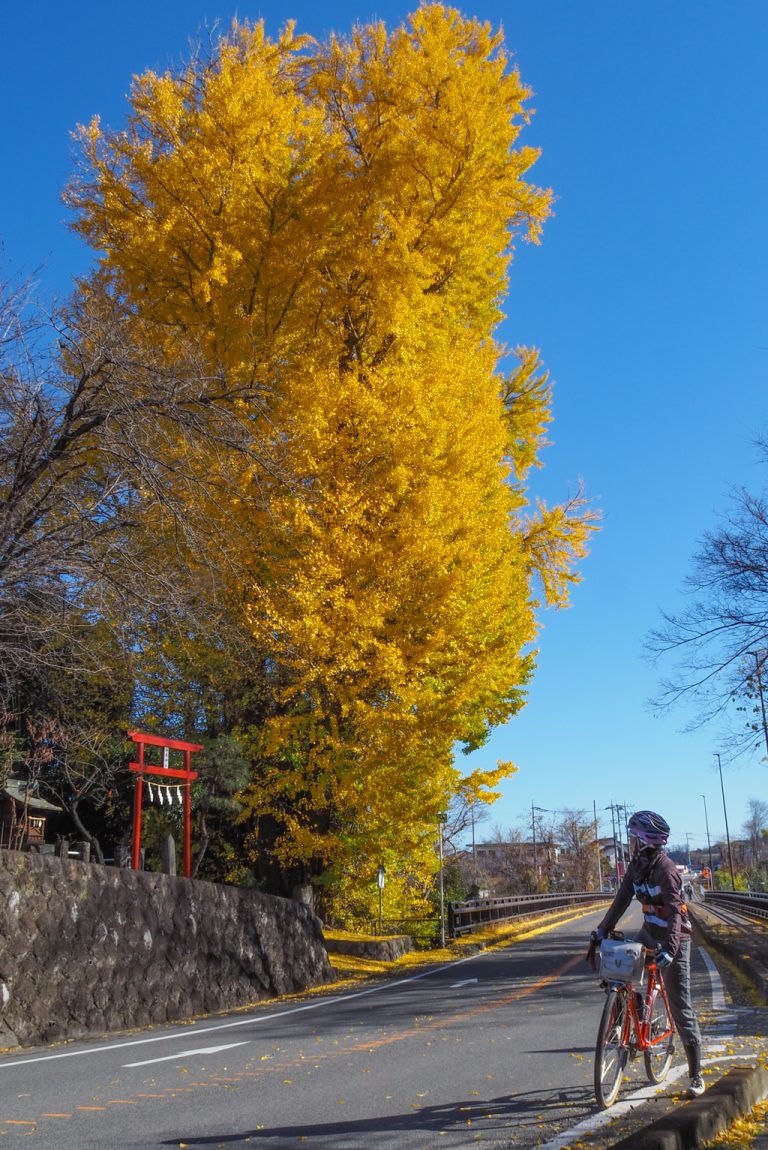
Cross the Tomioka Bypass (Route254) and go straight.
Turn left at the Ding junction and continue on the prefectural road. National Route254 is crowded with large vehicles and cars, so the route is set up to avoid them as much as possible.
The slope down the side of Miyazaki Park is a concrete slope and is quite steep.
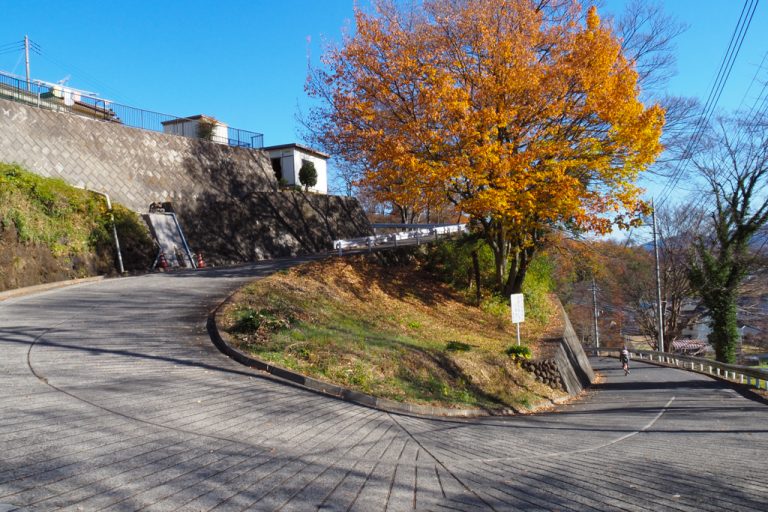
Nanjai Station with an unusual station name
Mt.Kannari is a nine-peak mountain range with nine peaks on a ridge about 3km long from east to west, and is popular for hiking. Cyclists can ride along the road that stretches along the foot of the mountain.
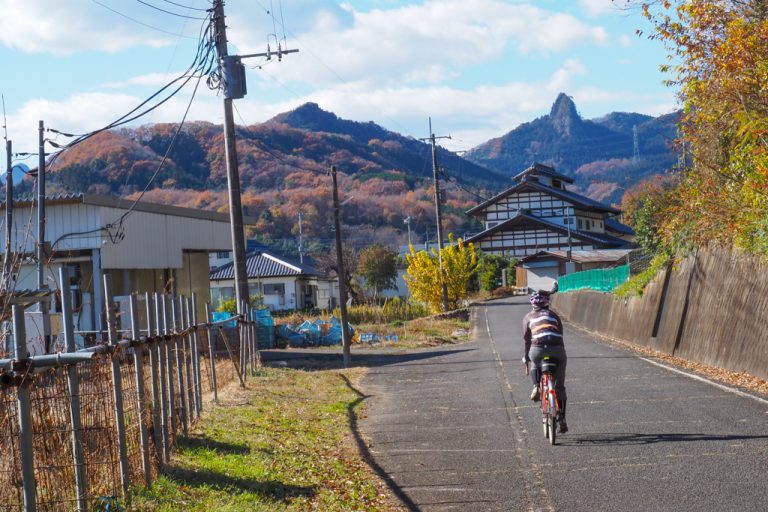
It is also called “mini Mt. Myogi” because of its craggy rocks.
The view from the top seems to be good, so I would like to come hiking as well.
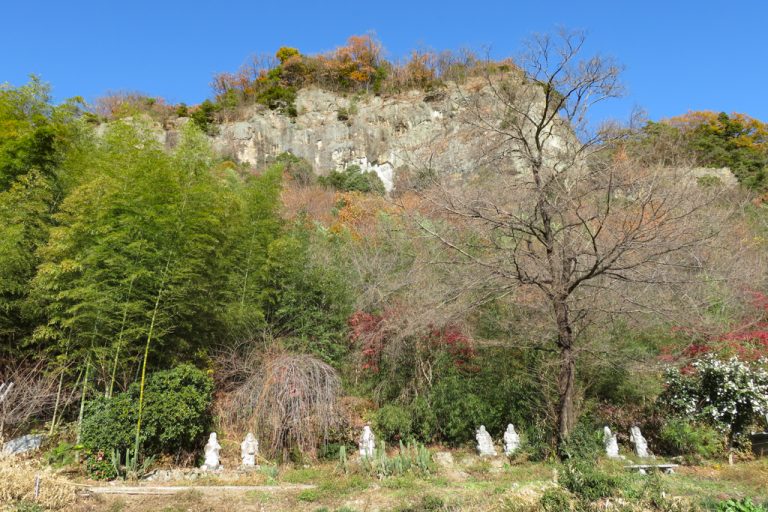
Turn left at Shinbori Toilet alley and pass under the elevated tracks Joshinetsu Expressway, and you will reach Nanjai Station. “Nanjai Station,” (“Nanjai” means “What!? ” in Japanese) which is funny to say out loud, is famous as a rare station name.
Finally, we are in Shimonita Town
From Prefectural Road48, merge onto National Road254 and head for Shimonita Station at once. There are many large vehicles on the national highway, so we proceeded at a brisk pace.
As we enter Shimonita Town, we see more and more fields of Shimonita leeks, and the scent of leeks is in the air.
The smell of green onions is in the air, and our hunger grows as we imagine the sukiyaki we are going to eat later in the day.
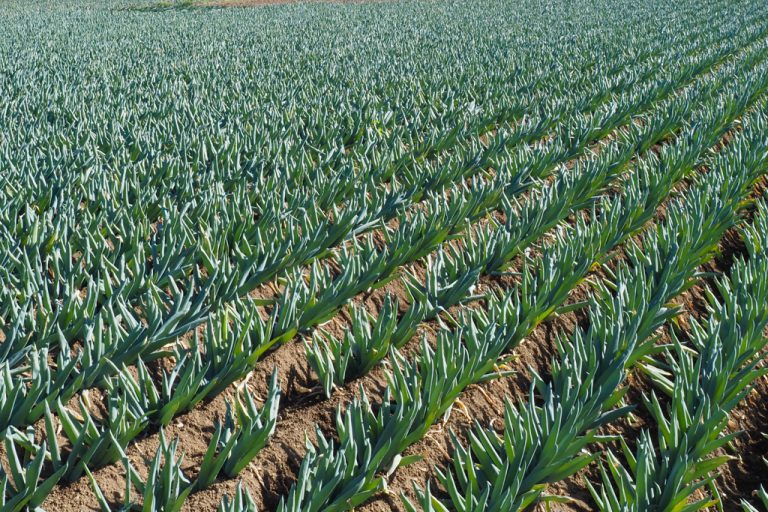
Turning left before Joshin Dentetsu crossing, Shimonita Station comes into view.
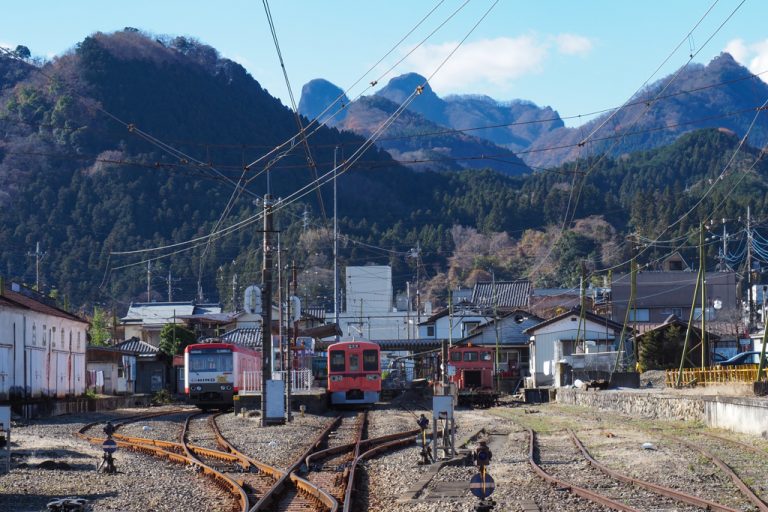
The brick warehouse near the station has a nice atmosphere. It was built in Taisho period (1912-1926) and used to store cocoons for silkworms.
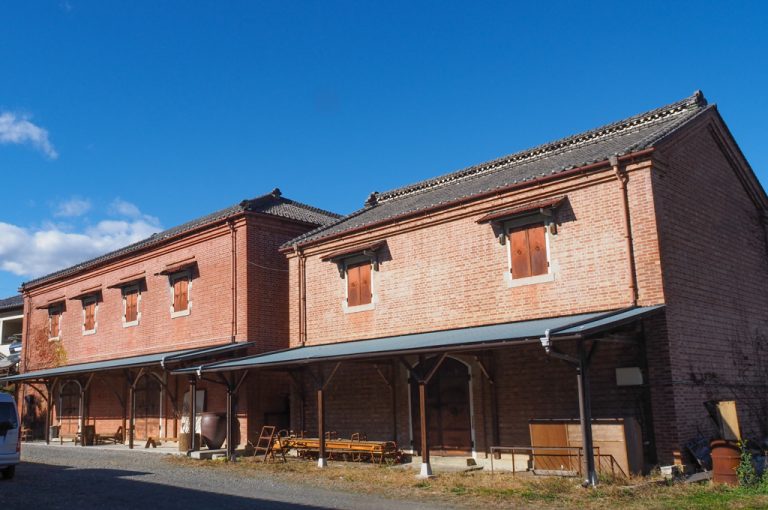
Cycling around Shimonita Town
We will take a short stroll before lunch. We rode through a small shopping street with a retro Showa period atmosphere.

The kanji (Chinese character) description of an old “撞球場” (billiard hall), is def.
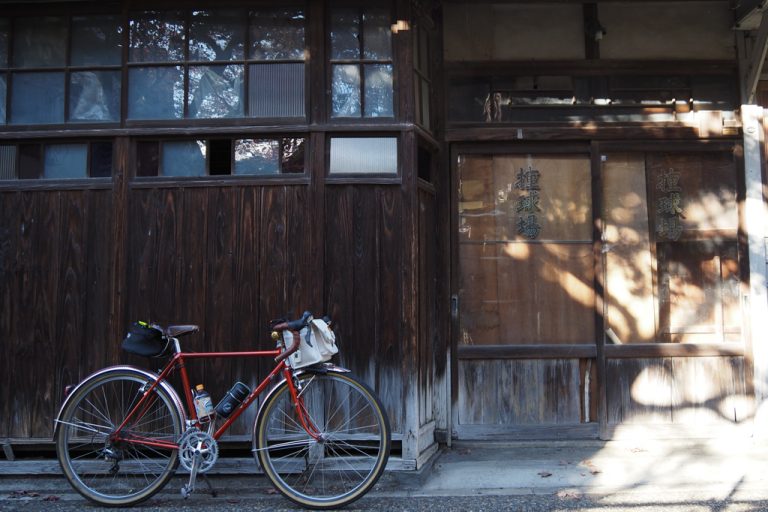
Suwa Shrine is located at the end of the shopping street. Please take a closer look at the shrine pavilion, which was rebuilt in the late Edo period and is decorated with magnificent carvings.

Sukiyaki with plenty of Shimonita leek
We arrived at Sukiyaki Colombia, which was featured in TV Tokyo’s drama “Kodoku -no-Gorumet” (Solo Gourmet).
As explained in the drama, sukiyaki in Shimonita is mostly made with pork. This is my first time to try pork sukiyaki, so I am looking forward to it.
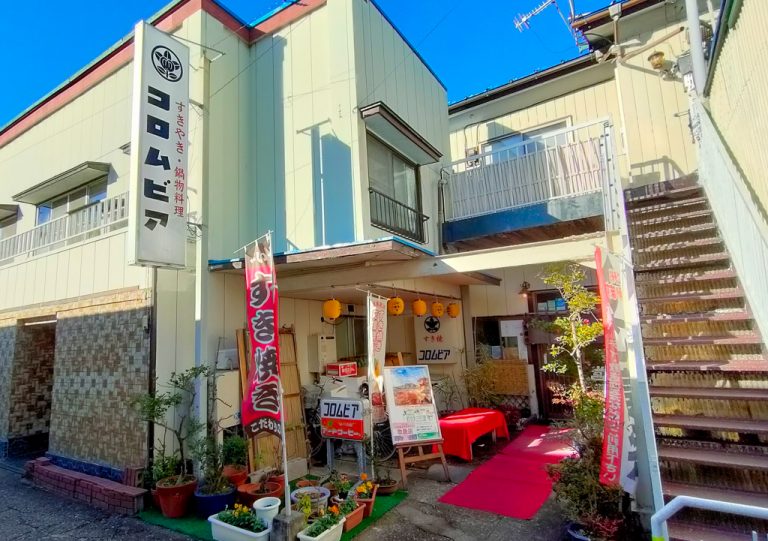
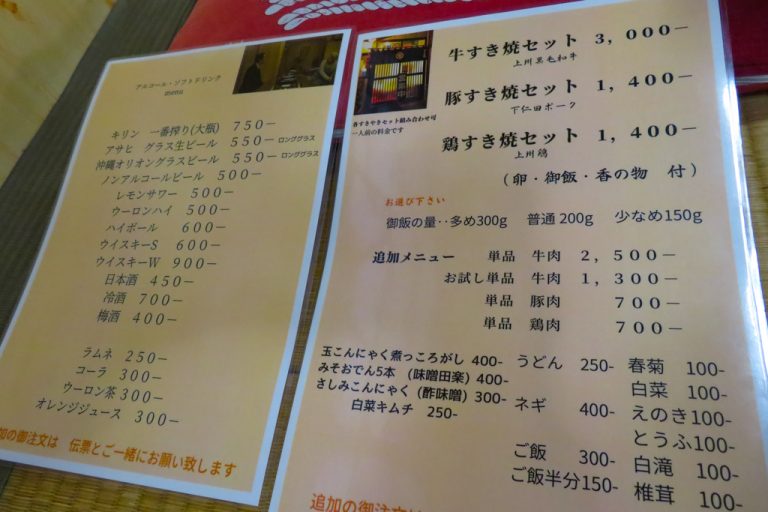
The pork sukiyaki set is 1,400 yen per person, and the pork is covered with a thick layer of Shimonita leeks. (The photo shows two servings.)
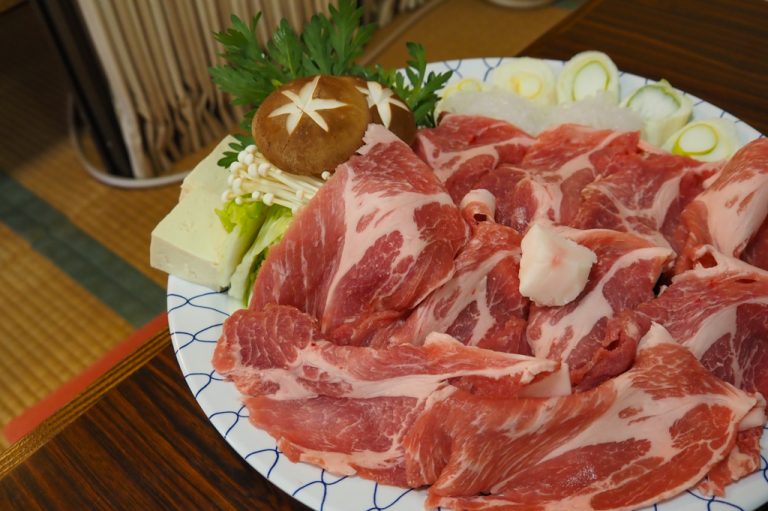
First, the Shimonita leeks are grilled to bring out their sweetness, and then the pork and other ingredients are added.
When the spicy sauce is added to the iron pot, it makes a nice sizzling sound and doubles the appetite.
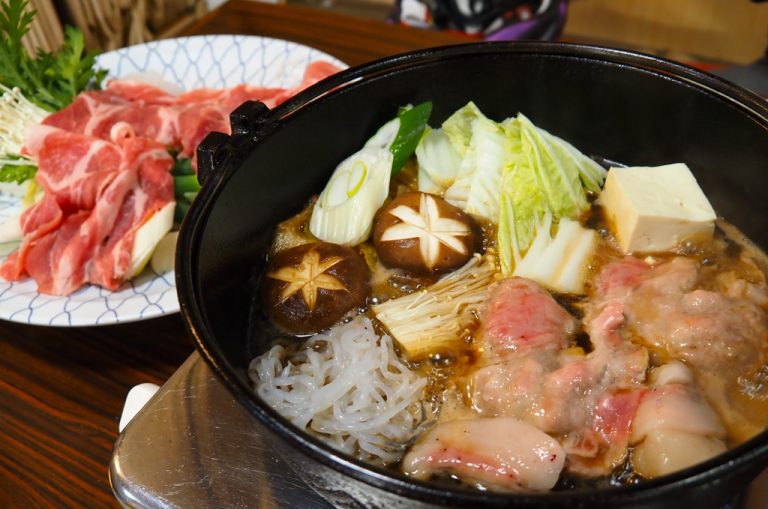
The grilled Shimonita leeks were sweet and went perfectly with the pork. This is a definite repeat customer.
Free Fare with the GOGO! Shimonita Campaign
With a full stomach, we headed for Shimonita Station. Opened in 1897, Shimonita Station was selected as one of the “100 Best Stations in Kanto Region”.
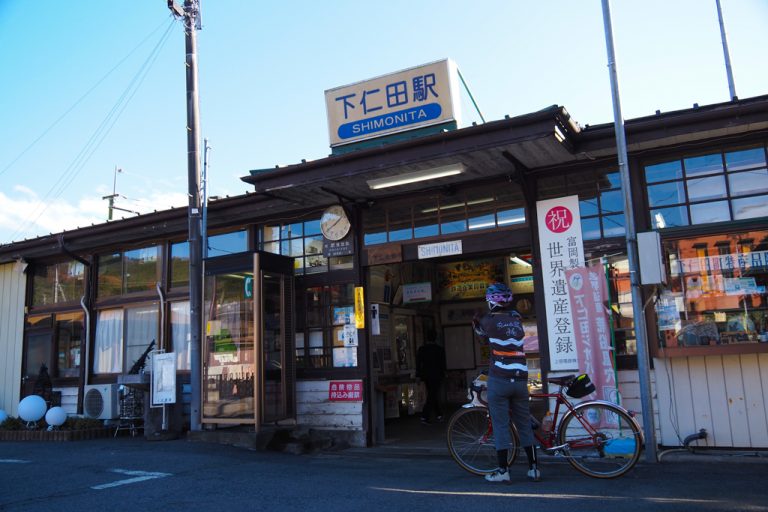
The benches in the waiting room are lined with hand-knitted cushions, adding to the retro atmosphere.
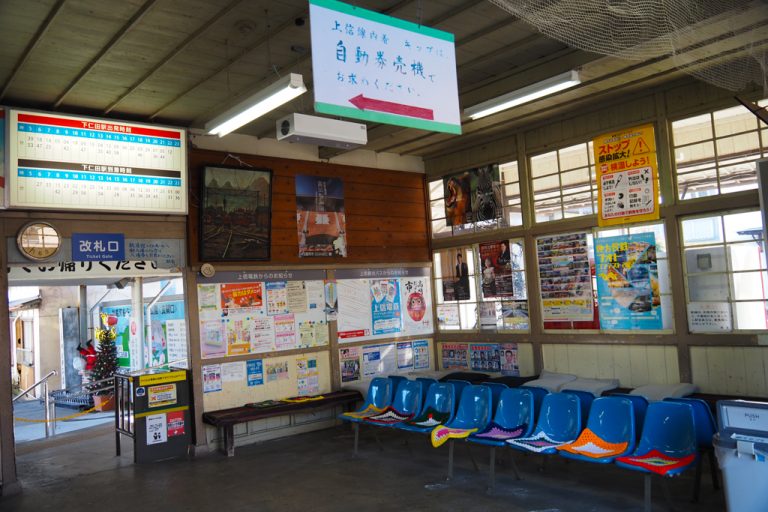
Go to the station counter, show the station attendant the receipt from Columbia where you had lunch, and receive a one-way ticket from Shimonita Station. ( “GOGO! Shimonita Campaign” is scheduled to run from June 1, 2022 to February 28, 2023, and if you show a receipt of 500 yen or more issued in Shimonita Town, you will receive a free one-way ticket for the section you use from Shimonita Station.)
We are riding to Yoshii Station, so 860 yen worth of ride is free! If you go to Takasaki station, you get 1,130 yen free. This is a big deal.
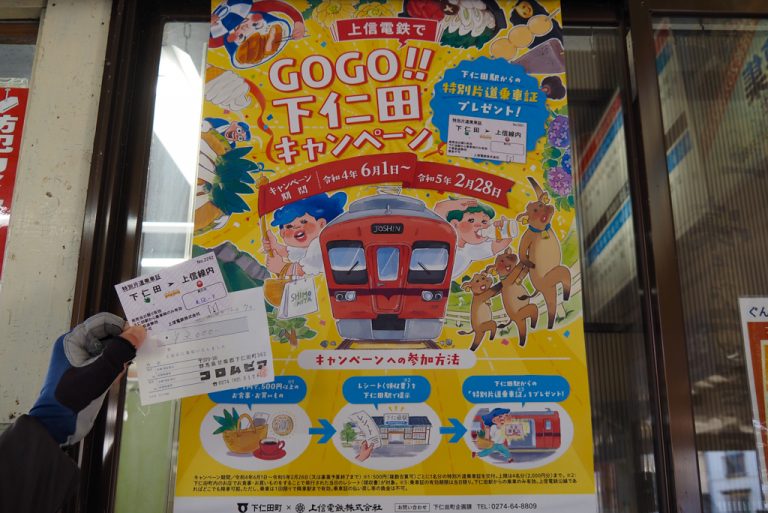
Jyoshin Dentetsu operates a cycle train that can be used at Shimonita Station, Joshu-Tomioka Station, Joshu-Fukushima Station, Yoshii Station, and Takasaki Station. It is nice to be able to put your bicycle on the train without removing it from the train.
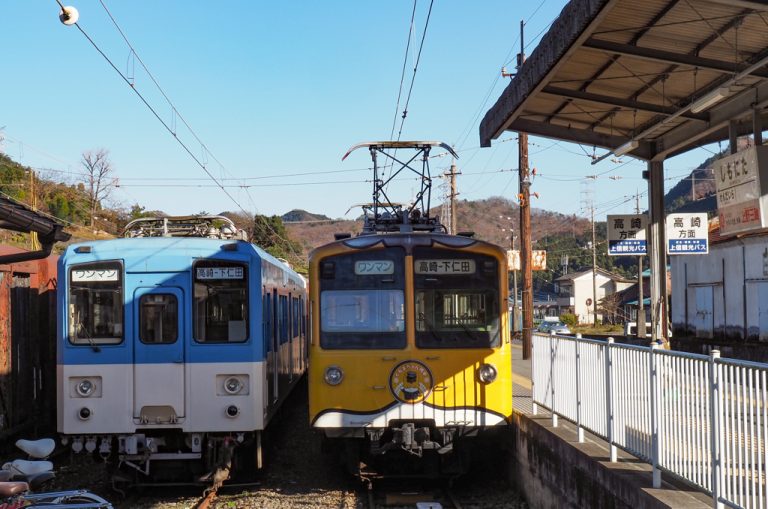
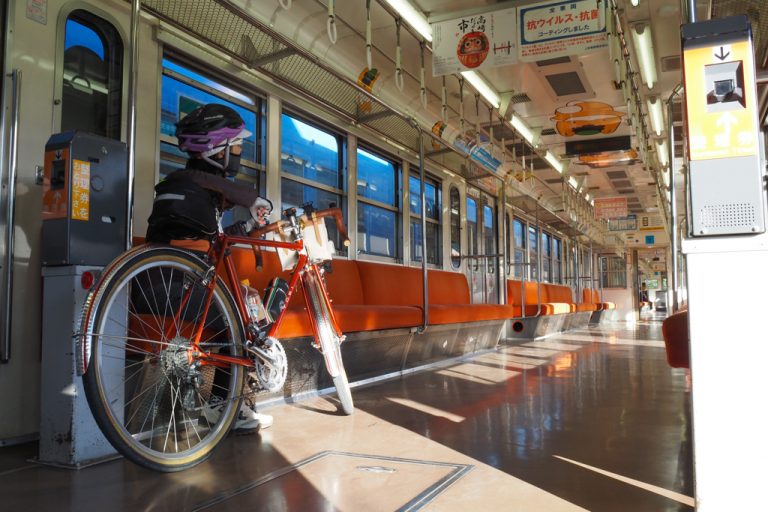
The train is designed for “Gunma-chan” and has “Gunma-chan” painted here and there.
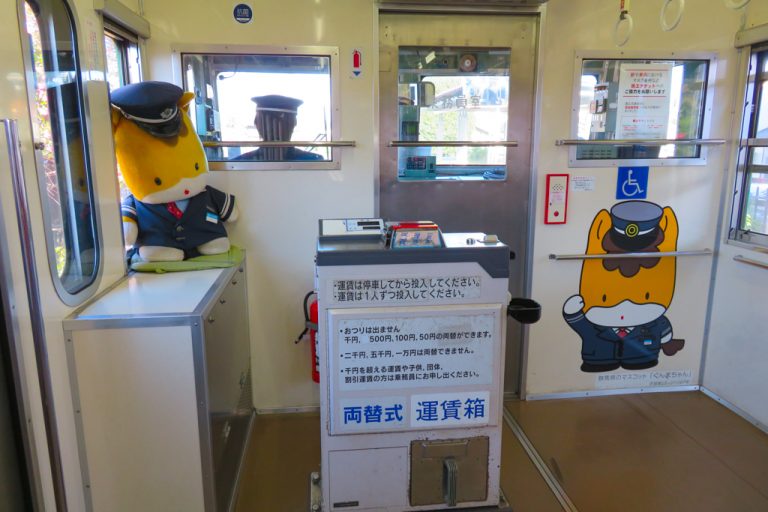
If you are thinking of going to Takasaki Station and going home on a bicycle, this is the goal of the tour. If you want to go to Takasaki Station and go home by bicycle, this is the goal.
Get off at Yoshii Station in front of the train.

Extra dessert
The goal of this route is where you get on the cycle train at Shimonita Station, but we got off at Yoshii Station and went for an extra dessert at the end.
Sweet strawberries at a tourist farm
From Yoshii Station, take National Route254 and ride a little further until you come to a junction with Prefectural Route 174. We stopped at a tourist farm called “Ichigo-chan-ie” located at one corner of the road.
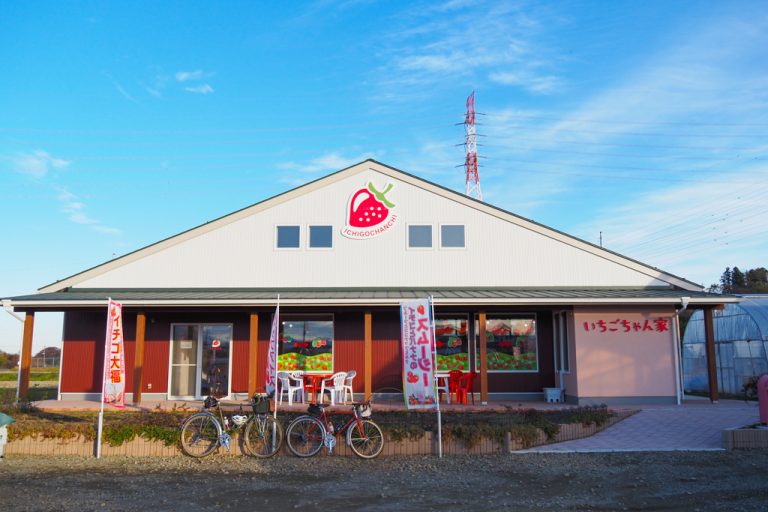
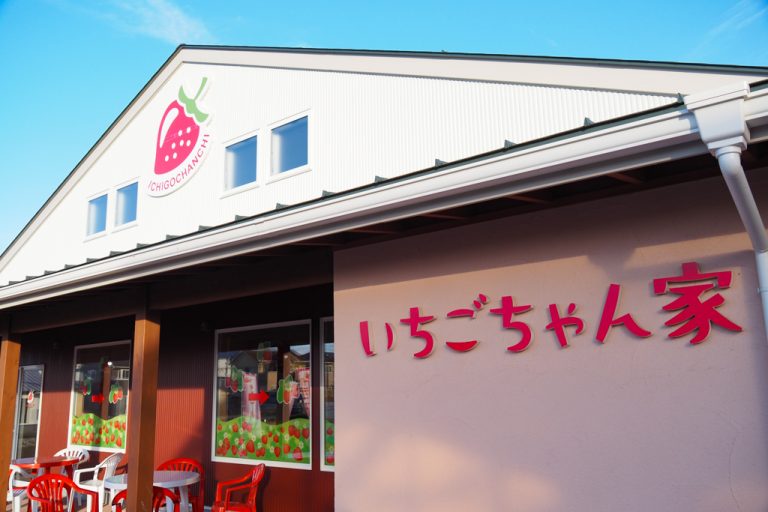
The facility opened in 2021 and began operating on December 3, 2022.
In addition to strawberry picking, you can enjoy strawberry daifuku, strawberry fruit sandwiches, strawberry roll cake, etc. at the cafe.
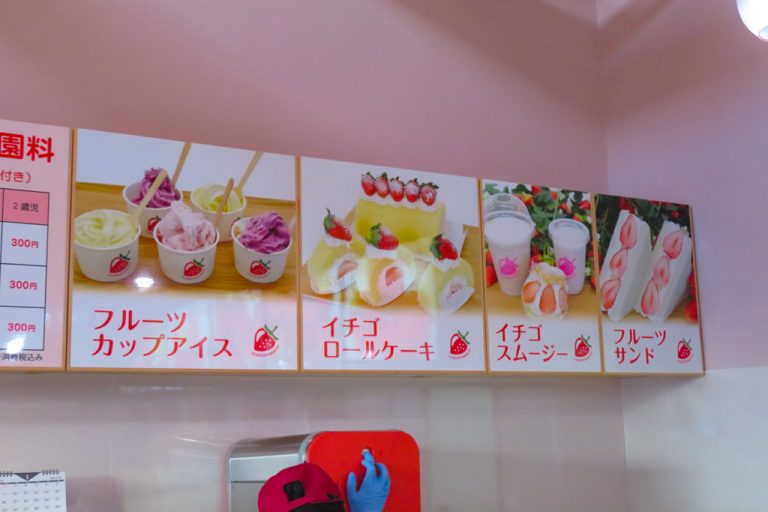
Unfortunately, it was evening and most of them were sold out.
So we decided to have a strawberry fruit sandwich and strawberry cup ice cream from the showcase. Ice cream is delicious in a warm restaurant.
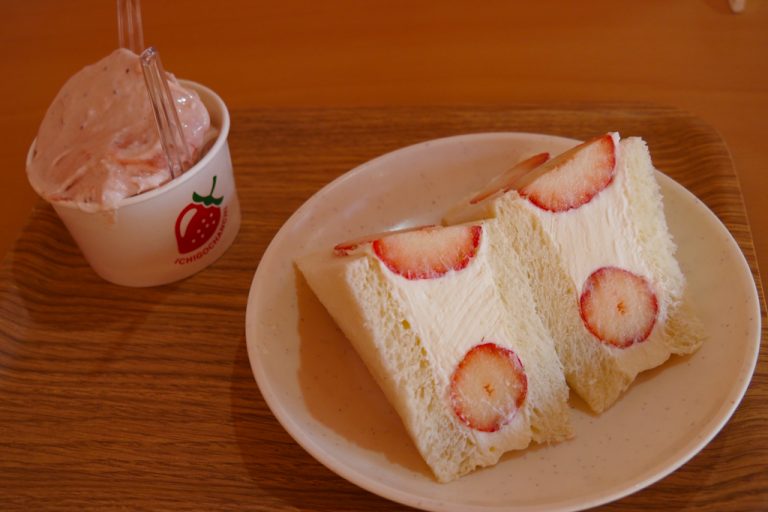
The fruit sandwich was also delicious, so next time we would like to come earlier in the day to try the other items on the menu.
You can leave the restaurant and return to Yoshii Station, or you can ride to Takasaki Station and cycle back.
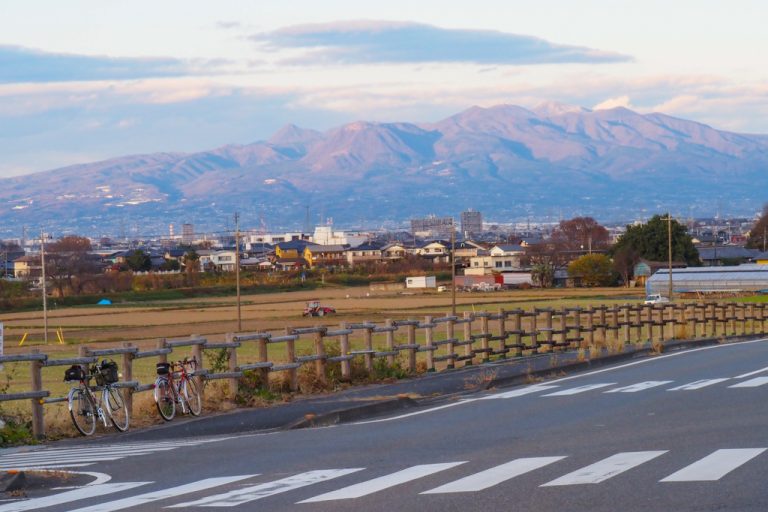
Finally, Mt. Akagi was beautiful in the evening sun, and we enjoyed the magnificent view.
Course Introduction
Access
Train: From JR Takasaki Station, get off at Jyoshin Dentetsu Yamana Station.
Car: Approx. 10 minutes from Yoshii Interchange on Joshinetsu Expressway
▼Three monuments in Ueno (Kozuke Sanpi)
https://www.city.takasaki.gunma.jp/info/sanpi/en/index.html
▼Joshin Dentetsu Company Cycle Train
https://www.joshin-dentetsu.co.jp/guide/1193/
▼GOGO! Shimonita Campaign by Joshin Dentetsu
https://www.joshin-dentetsu.co.jp/info/2169/
Summary
The purpose of this cycling trip was to eat delicious sukiyaki made with Shimonita leeks. It was such a benefit that we could enjoy the bike train for free thanks to “GOGO Shimonita Campaign”.



